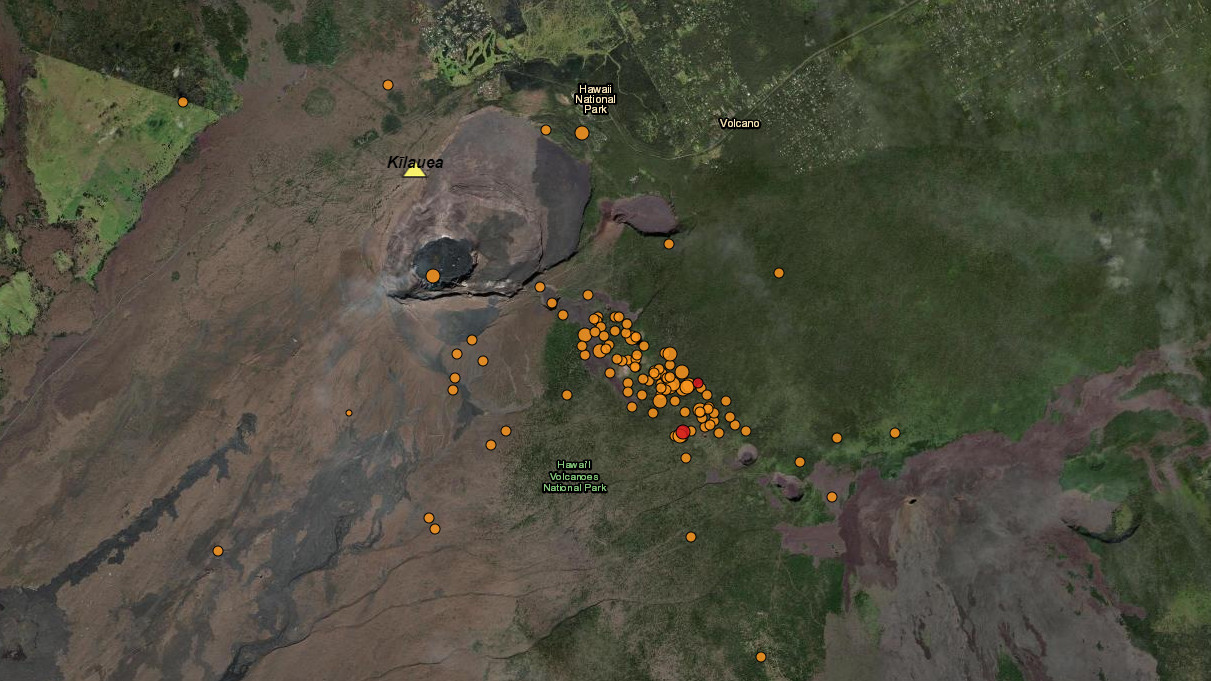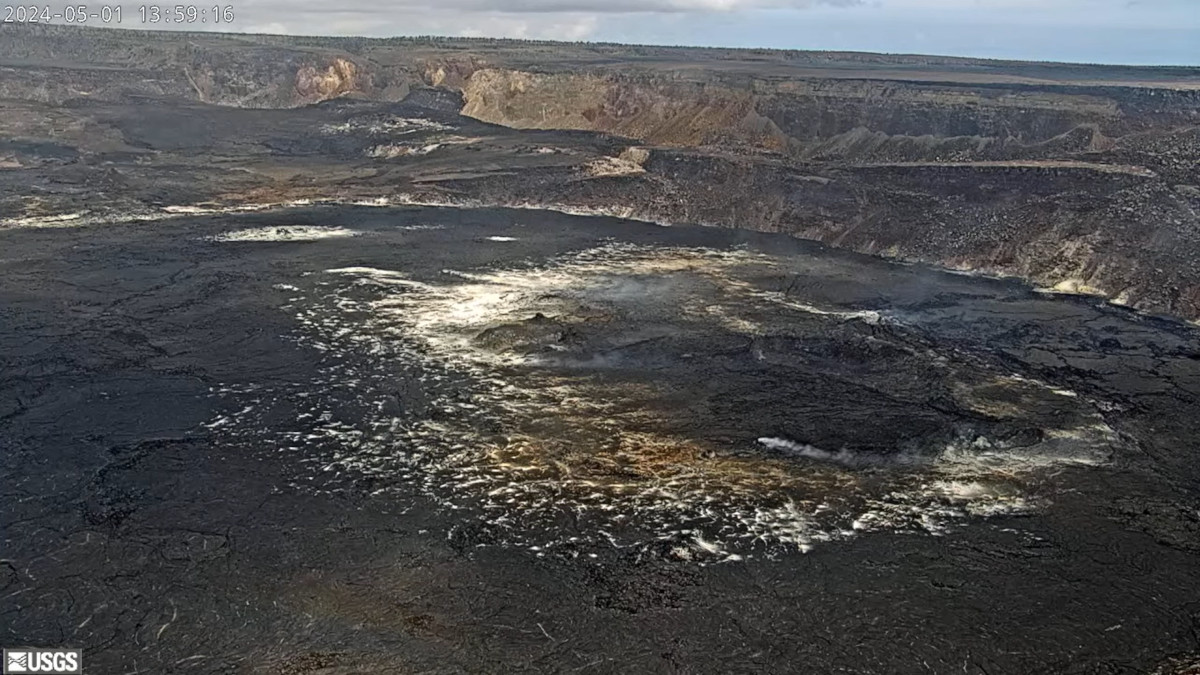(BIVN) – Kīlauea volcano is not erupting, and the current USGS Alert Level remains at ADVISORY.
On Wednesday at 10:24 a.m., scientists with the USGS Hawaiian Volcano Observatory reported the elevated seismicity was continuing beneath the upper East Rift Zone and caldera south of Halemaʻumaʻu.
Beneath the upper East Rift Zone, the earthquake locations that were initially observed after the April 27 uptick were focused primarily between Puhimau crater and the entrance to Hilina Pali Road. Since that time, the earthquakes have expanded toward Kīlauea caldera to the area beneath Keanakākoʻi crater. Scientists say earthquake depths are concentrated between 2 to 3 km (1.2 to 1.9 miles) beneath the surface with scattered shallower earthquakes.
The USGS HVO says that over the past 5 days, there have been over 1,300 earthquakes beneath the upper East Rift Zone and approximately 225 earthquakes beneath the southern end of Kīlauea caldera.
Here is the analysis provided by the USGS HVO on Wednesday morning:
At this time, it is not possible to say with certainty if this increase in activity will lead to an intrusion or eruption in the near future – or simply continue as seismic unrest at depth. The upper East Rift Zone is currently being pressurized by inflation of the main magma reservoir beneath the southern end of Kīlauea caldera and south of Keanakākoʻi crater within Hawai‘i Volcanoes National Park. The upper East Rift Zone is reacting to this pressurization. The current intensity of seismic swarms suggests that formation of a dike beneath the upper East Rift Zone or Kīlauea caldera is a potential outcome. However, if a dike is emplaced beneath the upper East Rift Zone, there is a much higher historical probability of it resulting in an intrusion (where magma remains below the surface) than as an eruption (where the dike breaks the surface). In either case, dike emplacement from these shallow depths can take place with very little warning. Both intrusions and eruptions can cause significant surface cracking that can render roadways in the area impassable.

from interactive USGS map showing the location of the earthquakes, mostly beneath the upper East Rift Zone with fewer in the caldera south of Halemaʻumaʻu
Due to the ongoing spike in earthquakes , temporary closures within Hawaiʻi Volcanoes National Park include:
- Chain of Craters Road from the intersection at Crater Rim Drive will close at 5 p.m. Monday, April 29.
- Hilina Pali Road is closed to all use. Kulanaokuaiki Campground is closed.
- Overnight camping is suspended for all coastal sites, Nāpau and Pepeiao Cabin.
- Kaʻū Desert Trail is closed from the Footprints Exhibit.
- Maunaiki Trail is closed.


by Big Island Video News2:31 pm
on at
STORY SUMMARY
HAWAIʻI VOLCANOES NATIONAL PARK - Over the past 5 days, there have been over 1,300 earthquakes beneath the upper East Rift Zone.